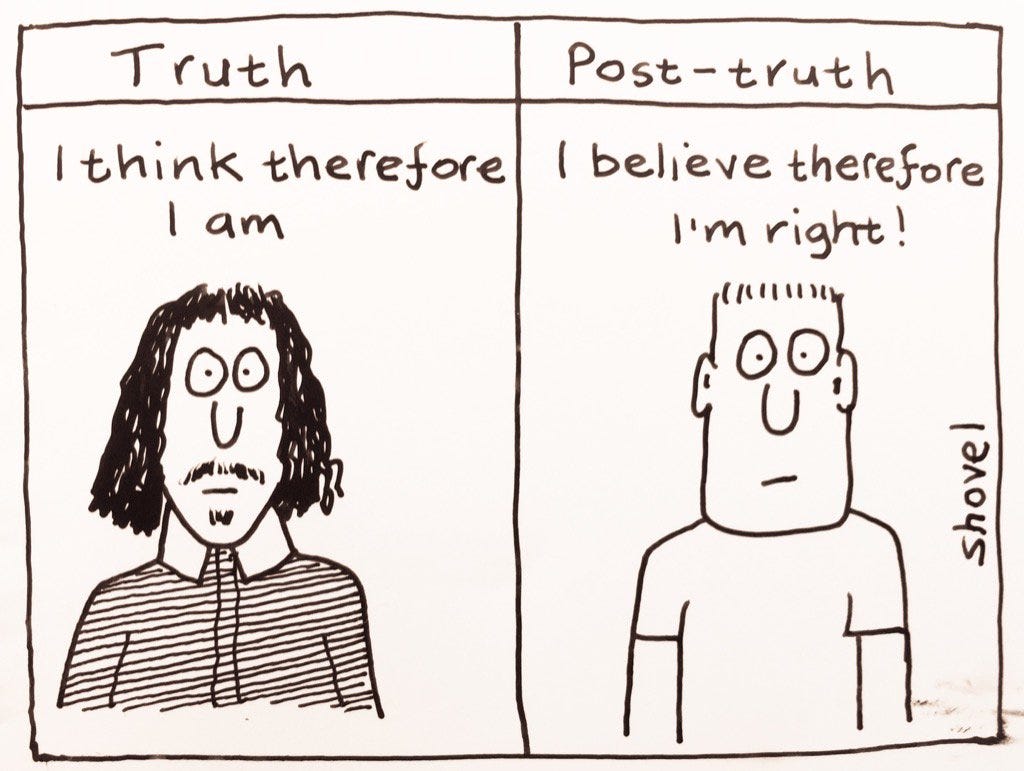Daryl Copeland, guerrilladiplomacy.com, March 7, 2019

image (not from article) from
Memorable quotation from the article:
Enter the surveillance state, and welcome to the post-truth age.
In the few decades since the end of the Cold War, the Globalization Age has heralded a new era of volatility, uncertainty, complexity and ambiguity. The neo-liberal model of international relations, in place since the middle of the last century and anchored by the Breton Woods institutions, is crumbling, yet new forms of global governance have yet to be established. Power is shifting inexorably from the North Atlantic to the Asia Pacific and from states to a host of new players – corporate, non-governmental, supra- and sub-national. In the emerging heteropolar world order, quite unlike the multi- or bi- polar days of yore, today the sources and vectors of power and influence are defined more by difference than by similarity, and a populist surge has been engendered in reactionary response. Risks are multiplying, and remedies are elusive. We have entered terra incognita and diplomacy, facing an existential crisis, has failed to keep up.
How, then, has the media contributed to these trends?
The contemporary media landscape is characterized by chaos in the infosphere. In both the conventional and new media, hard news and careful analysis have given way to infotainment and sensationalism – if it bleeds, it leads. As the late American media theorist Neil Postman famously remarked, “we are amusing ourselves to death.” Fake news, alternative facts, belief, emotion and conviction have triumphed over evidence, data, and rational analysis. Witness the rise of the commentariat, the explosion of satellite TV and internet sites, and the dominance of national or ideological POV (point of view) coverage. Think Russia Today (RT), Fox News, and a host of others. Smart phones have turned everyone with a handset into an instant reporter, producing free feed which has sent the business model for professional journalism, with its commitment to fact checking, objectivity and balance, into a tailspin. Media ownership has become more concentrated, even as the choice sources has become more fragmented and profuse. This combination has served mainly to produce a galaxy of echo chambers for the like-minded.
What was once just a matter of selling audiences to advertisers has morphed into the bundling and packaging of subscriber information for public and private sector clients. Facebook, Google, Apple, Twitter, Verizon and other big telecoms all colluded with intelligence agencies, while the likes of Cambridge Analyticia and AggregateIQ pioneered new forms of political data mining and assessment.
Just as Julian Assange, WikiLeaks and “Cablegate” provided a Napster moment for governments – secrets are now near impossible to keep – Ed Snowden’s revelations underlined the end of communications confidentiality and privacy for the public.
Enter the surveillance state, and welcome to the post-truth age.
Diplomats must now confront a staggeringly vast media universe. Digital literacy and technological savvy have become essential. On the input side, on-line resources can function to provide information, insight, and intelligence. On the output side, social and digital media represent a vital tool in the exercise of persuasion and influence, allowing a supple form of triangulation between envoys, populations and the receiving state. This is public diplomacy (PD) [JB emphasis], and it relies upon connecting directly with foreign populations and forging partnerships with civil society in order to convince, rather than coerce host governments to act in accordance with the wishes of the sending state. The internet has emerged as a new political centre and is the flagship of globalization; ever-increasing levels and proliferating platforms of connectivity have effectively de-territorialized national and ideological space. Yet too many foreign ministries remain stuck in the last century, still wed to press releases and photo-ops.
None of that can substitute for wide-ranging and strategic digital engagement,. Although many diplomats now use the new media, those activities are rarely in an integrated, coherent and strategic context, and the results have proven very difficult to measure.
No comments:
Post a Comment